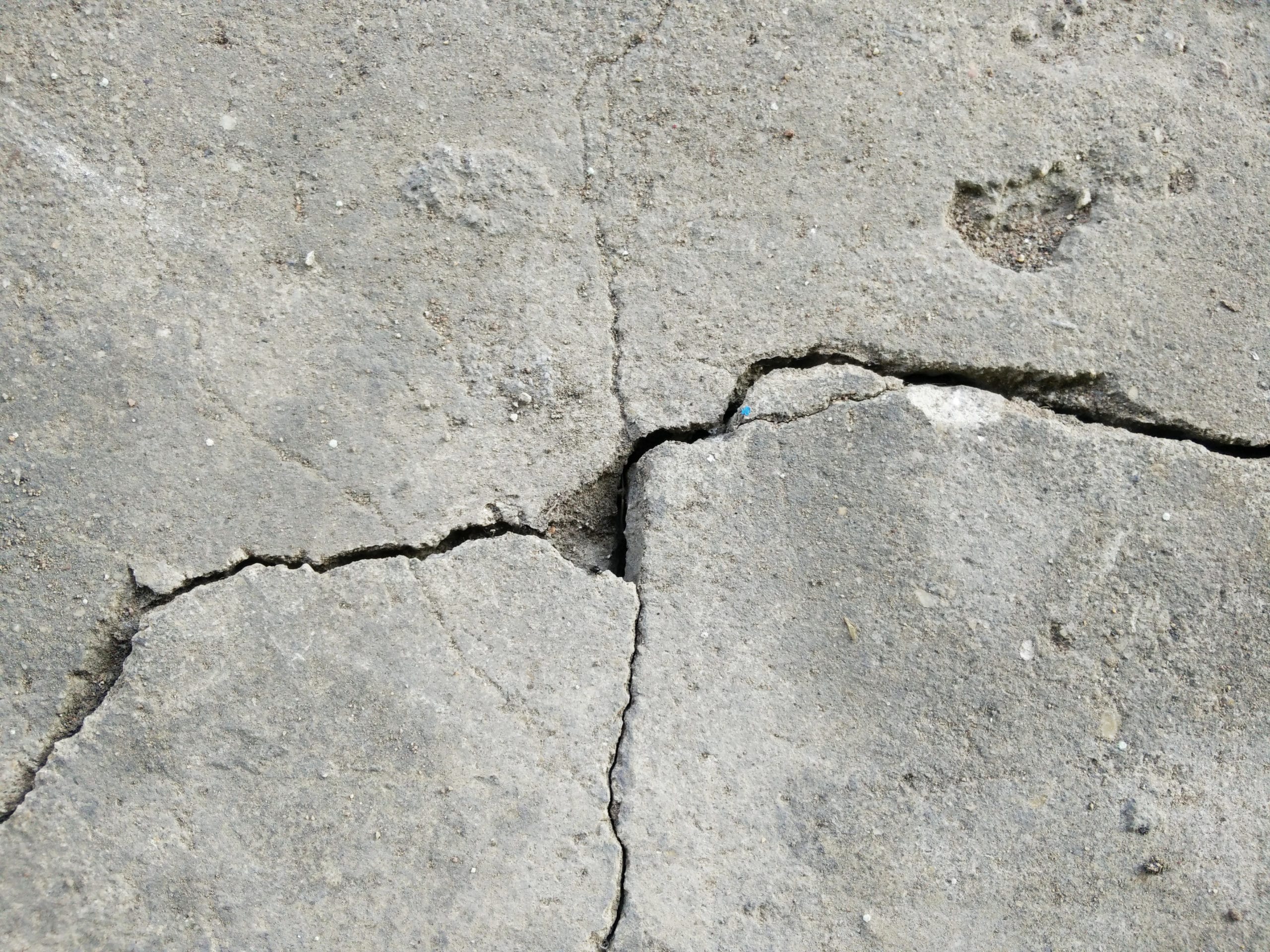Every concrete slab has cracks. Due to the rigid nature of concrete, cracks are inevitable. Uneven drying, shrinkage, and temperature changes can all cause fractures in your slab. Once a crack develops, it’s important to seal it to prevent water seepage and further damage.
To clear up confusion and make this task as easy as possible, we’ve created a how-to guide for repairing cracks in your poured concrete slabs.
Is Sealing the Crack a Bad Idea?
First of all, if you have any hesitation about sealing the crack, listen to your instincts. If the size or pattern of the crack indicates you might have a serious issue with your foundation, don’t try to seal it. Call in a professional to inspect your foundation. If there’s a bigger problem than just a small crack, you don’t want to provide an aesthetic solution without getting to the root of the issue.
Check for Moisture
A common occurrence when you have a crack in your foundation or slab is the presence of water. You can dry the water with a blow-dryer. If it stays dry after a few minutes, you can proceed. If not, you’ll need to wait for the crack to dry on its own.
Prep the Crack
Using a chisel, widen the crack to one quarter of an inch in the shape of a V; this will allow plenty of room for the sealant to rest. Use a wire brush to remove any dried concrete and debris from the crack. Then remove the residue with a shop vac. Now you’re ready to get started.
What Sealant to Use
There are many different kinds of concrete crack repair kits out there. For cracks less than one half inch wide, several caulk and sealant options are available. Simply caulk the crack, then use a trowel to spread the caulk evenly. A caulking option will dry quickly, within a couple of hours.
For deeper cracks, we recommend using an epoxy sealant. An epoxy sealant can also be used on smaller cracks, but for larger fractures in your concrete, you’ll want to stick exclusively with an epoxy remedy.
The Sealing Process
Now that you have your crack chiseled and prepared, mix your epoxy. Take care to mix only the amount you’ll need. Otherwise, it will get thick and impossible to use. A hydraulic pump, pressure pot, and an air-actuated caulking gun can be used to inject the epoxy into the crack if high pressure is needed. If not, you can opt to use a pourable epoxy.
Begin pumping or pouring your epoxy into the crack, starting from one end and slowly working your way to the other. Pay attention to the resin. If it’s overflowing, continue down the crack. But if the epoxy is still flowing down through the crack, don’t move on until it has stopped.
The epoxy will start to gel or harden depending on what kind you use. Go over the crack with a trowel to even the sealant. Using a paintbrush dipped in mineral spirits, feather out the edges of the epoxy. This will clean things up and keep your slab as smooth as possible. You can expect the curing process to last a few days, up to six. The instructions on your epoxy will give you a clearer idea of what kind of timeline to expect.
Final Seal
After the epoxy has cured, you can give your slab a final seal if appearance is important. You also have the option of applying a plastic surface sealer before you fill the cracks. This protects the concrete and can be pulled up after you’ve applied the epoxy, leaving your concrete’s sheen (or lack thereof) in the same state it was in before you made repairs.
The Wrong Way to Repair Cracks
When repairing cracks in your concrete slabs, it’s crucial that you address the entire crack, all the way down to its deepest parts. Most DIY fixes fail because the homeowner performs a superficial fix. If you use a silicone caulk, your crack will seem to be fixed, but you haven’t stopped water from leeching in, and in a few years’ time, the caulk will come loose and peel away.
If at that point you dig out the caulk, you might try to fill the hole with hydraulic cement. This will also leave you disappointed. Hydraulic cement doesn’t bond well with the concrete used for slabs. As time goes on, the rigid hydraulic cement will start to put off a white powdery substance, and moisture will seep in.
When you have a crack that needs attention, it’s important that you either do the job correctly and use the right tools or hire a professional to take care of it for you. If you try a quick fix or skip steps, you’ll be back where you started in just a few years.
Conclusion
Cracks in your concrete can be easily fixed if you have the patience and right materials. Take the time to do your prep work, research the sealant that works best for your needs, and then get to it!

